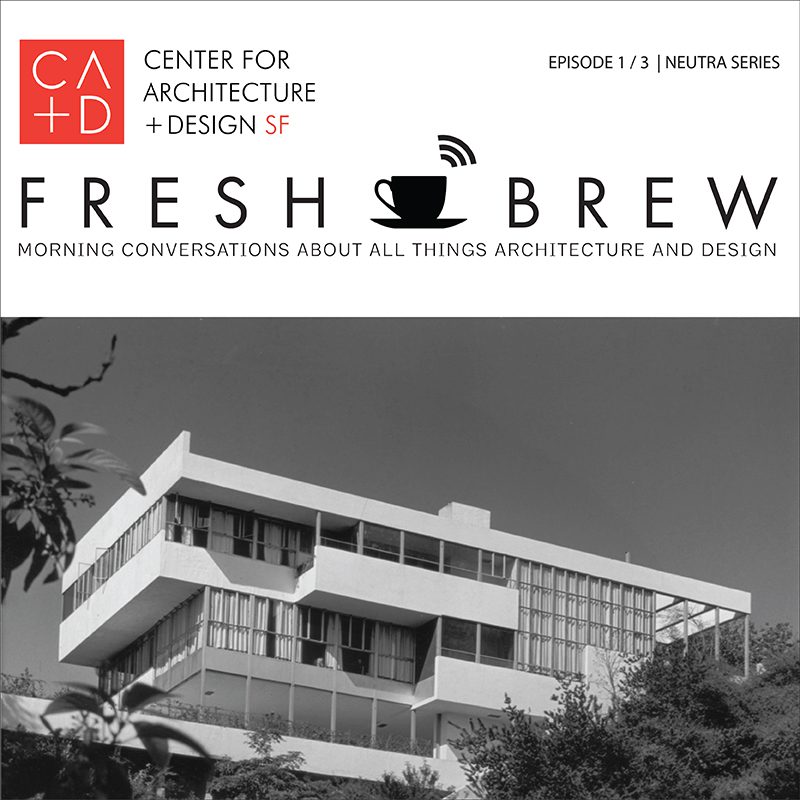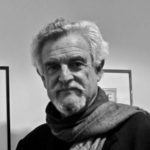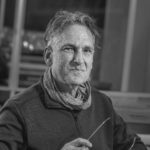
Fresh Brew | Cheap and Thin: Neutra and Frank Lloyd Wright
<< All Events
Fresh Brew | Cheap and Thin: Neutra and Frank Lloyd Wright

1929 Lovell Health House | Courtesy of The Neutra Institute for Survival Through Design
AIA Member: $15 | General: $20 | Student: $5
Note: Three-day passes are no longer available; join us for the remaining program of this three-part series by registering below. Click HERE to view info on Episode #2 | Creative Synthesis: Neutra's Prescient Quest for Architectural Well-Being (5/19/22)
REGISTER | EPISODE #3 Architecture of Social Concern: A 1941 Prefabricated Community
 Join us for the first of a three-part series exploring the ideas and work of the pioneer Viennese-American architect, Richard J. Neutra, FAIA (1892-1970). Gary Strang, FASLA, AIA, Principal, GLS Landscape/Architecture moderates this talk with Dr. Raymond Neutra, President of The Neutra Institute for Survival Through Design, who will discuss his new book, Cheap and Thin: Neutra and Frank Lloyd Wright.
Join us for the first of a three-part series exploring the ideas and work of the pioneer Viennese-American architect, Richard J. Neutra, FAIA (1892-1970). Gary Strang, FASLA, AIA, Principal, GLS Landscape/Architecture moderates this talk with Dr. Raymond Neutra, President of The Neutra Institute for Survival Through Design, who will discuss his new book, Cheap and Thin: Neutra and Frank Lloyd Wright.
The book explores the fascinating journey of Dr. Neutra's father who immigrated to the United States in 1923 to meet Louis Sullivan and work with Frank Lloyd Wright. There was great cordiality with Wright until Neutra’s 1929 Lovell Health House was chosen for the Modern Architecture Exhibition at MOMA in 1932. Wright sneered at it as “cheap and thin.” Neutra adopted the “Eight Points” that characterized Wright’s Prairie House phase, but indeed, he took them in the direction of inexpensive and light prefabrication that related strongly to the dynamic natural environment, thereby initiating an American form of European modernism that is influential if not dominant in the US and much of the world today.
While Neutra is well-known for training the generation of California architects who defined mid-century modernism, it is not well known that he had deep knowledge of landscape architecture which fundamentally informed his work. Prior to coming to the United States, he worked as an apprentice to Switzerland’s most beloved landscape designer and nurseryman Gustav Amman, who designed over 7,000 gardens and was in direct dialogue with those in Olmstead’s circle.
When asked which projects were most formative in his development, Neutra cited his first built project, a forest cemetery in Germany, along with the celebrated Kaufman desert house in Palm Springs. Neutra’s architecture and influence is distinguished from his peers because it is directly tied to his lifelong pre-occupation with landscape, its effect on the human psyche and its importance to human health. Revisiting Neutra’s legacy and 1954 book, Survival Through Design, is especially relevant in the context of today, where environmental, social and human health issues are taking center stage.
Speakers
 Dr. Raymond Neutra, President, The Neutra Institute for Survival Through Design
Dr. Raymond Neutra, President, The Neutra Institute for Survival Through Design
Dr. Raymond Neutra is the youngest son of Richard Neutra, one of the most influential modern architects of the twentieth century. After a public health career in environmental medicine and epidemiology at several universities and the California Department of Public Health, Dr. Neutra has been drawn back to the legacy of his father and brother. He has been active in the preservation of the Neutra VDL Studio and Residences and several other Neutra projects. He is an “ambassador” for the Iconic House Network and has written scholarly articles on his father’s career. In addition to preservation, he endorses the Neutra commitment to socially and ecologically responsible design inspired by evidence.
 Gary Strang, FASLA, AIA, Principal, GLS Landscape/Architecture
Gary Strang, FASLA, AIA, Principal, GLS Landscape/Architecture
Based in San Francisco, for the past 28 years, Gary has focused on the design of contemporary urban landscapes. Blurring the lines between disciplines, he seeks to improve the livability of cities through the integration of architecture, infrastructure, and landscape. Recent projects include 2 acres of waterfront outdoor space at the Exploratorium "Museum of Science, Art and Human Perception" at Piers 15 & 17 in San Francisco, The New Stanford Hospital, and the expansion of the Haas School of Business at UC Berkeley. Gary is a Fellow of the American Society of Landscape Architects (ASLA), a licensed architect, former Center for Architecture and Design Board Member, and currently serves as Co-Chair of the Bay Conservation and Development Commission (BCDC) Design Review Board and as a Stewardship Advisor to the Neutra Institute for Survival Through Design.
Fresh Brew is a series of online morning conversations covering a variety of topics about all things architecture and design. Fresh Brew provides the general public and industry professionals with engaging dialogue and a space for inspiration. Co-presented by the Center for Architecture + Design in collaboration with AIA San Francisco.
Thank you to our Community Partners
AIA East Bay
ASLA Northern California
Marin Builders Association
Learning Objectives (1 LU)
1. Participants will explore key social and environmental drivers that distinguish Neutra’s work from his peers, and learn why it is important to re-evaluate his legacy today in the context of health and environmental crises.
2. Participants will become familiar with the historical factors that contributed to Neutra’s introduction of radical environmental modernism to the U.S. at the Lovell House in 1929. These early experiences establish Neutra’s process and his work as important precedents going forward, for the health and environmental movement that is shaping architecture and design today.
3. Learn key details regarding Neutra’s lifelong affiliation and admiration for Wright's "Eight Points" which establishes him as a protege of Wright, and not a protégé of the great European modernists, but rather an American contemporary of them. This points to Neutra’s architecture as being distinct from European modernism in its relationship to nature and situates our own work today as a merging of these two traditions with implications for the future.
4. Participants will be introduced to the design tactics that Neutra used to influence the brain and affect performance and health, that can be taken into consideration in practice today.
He was invited by Governor Rex Tugwell in 1941 to serve as Design Consultant for a series of hospitals, rural health centers and schools. These were ready for construction once WWII was over. A few of these were built as designed and others were influenced by the designs. The projects were published in late 1940 in Brazil in English and Portuguese as "Architecture of Social Concern."
Suggested resources:
Richard Neutra: And The Search for Modern Architecture, Thomas Hines (2006)
Architecture of Social Concern in Regions of Mild Climate, Richard Neutra (1948)
I am not a big expert on current architecture. Biophilic architects like Moishe Sadie, Renzo Piano, Tom Kundig, MASS Architects' work in Africa come to mind as do firms like Perkins Eastman who have Environmental Psychology units.
I realize that this ongoing commitment is a problem but as an Epidemiologist I am not the person to provide positive and negative examples.
Write me at raymondneutra@gmail.com to explore possibilities.
Thank you to our Community Partners
Marin Builders Association | The Neutra Institute for Survival Through Design
Details
- Date:
- Thursday, April 14, 2022
- Time:
-
9:00 am - 10:00 am PDT
- Event Categories:
- AIASF Event, Community, Fresh Brew, Panel Discussion, Public Program
Venue
- Online Event
